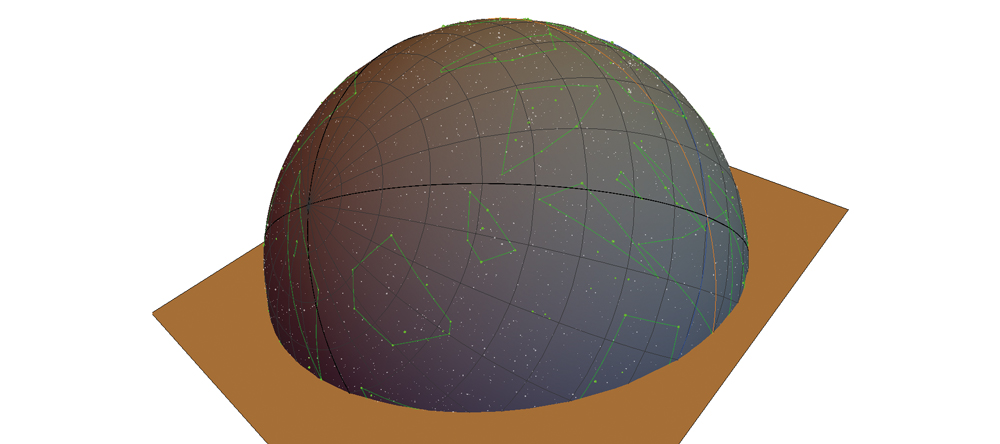The project concerned the history of positional astronomy from the Babylonian sources to their reception by Hipparchus and Ptolemy.
Research

Globe based on data of Hipparchus of Nicaea | Author: Susanne M. Hoffmann | Copyright: Susanne M. Hoffmann
The modern concept of describing stellar positions by celestial coordinates was formed in Greek antiquity. The earliest source using exact coordinates is the star catalogue in Ptolemy’s Almagest from the second century CE, but earlier approaches show up in Hipparchus’s work from the second century BCE, which is only partly preserved. This project analyses the transfer of concepts of mathematical astronomy from Babylon to Greece: Which Greek constellations were copied from Babylonian ones? Which Babylonian astrological tools and concepts did the ancients include in Greek mathematical astronomy? And which Babylonian lists of stars or other data did Greek astronomers use to set up or improve their own mathematical astronomy?
Results
The result of this work is a better understanding of the transfer of concepts. We now understand how Hipparchus’s description of stellar positions differs from those by Ptolemy and which of Hipparchus’s data are of Babylonian origin and which are not. The development of scientific understanding is reconstructed from astrological and literary works as well as mathematical texts and by developing software to visually compare ancient celestial maps and globes. The high point of the historical positioning system is the invention of coordinate systems and their introduction to all mathematical science by transformation and generalization of astronomical concepts.
The project had been part of the program “History of Ancient Science” (HistAS) of the Berlin Graduate School of Ancient Studies (BerGSAS). In April 2016 Susanne M. Hoffmann successfully completed the dissertation.
Related Publications
Susanne M. Hoffmann, Hipparchs Himmelsglobus. Ein Bindeglied in der babylonisch-griechischen Astrometrie?, Wien / New York: Springer, 2017
